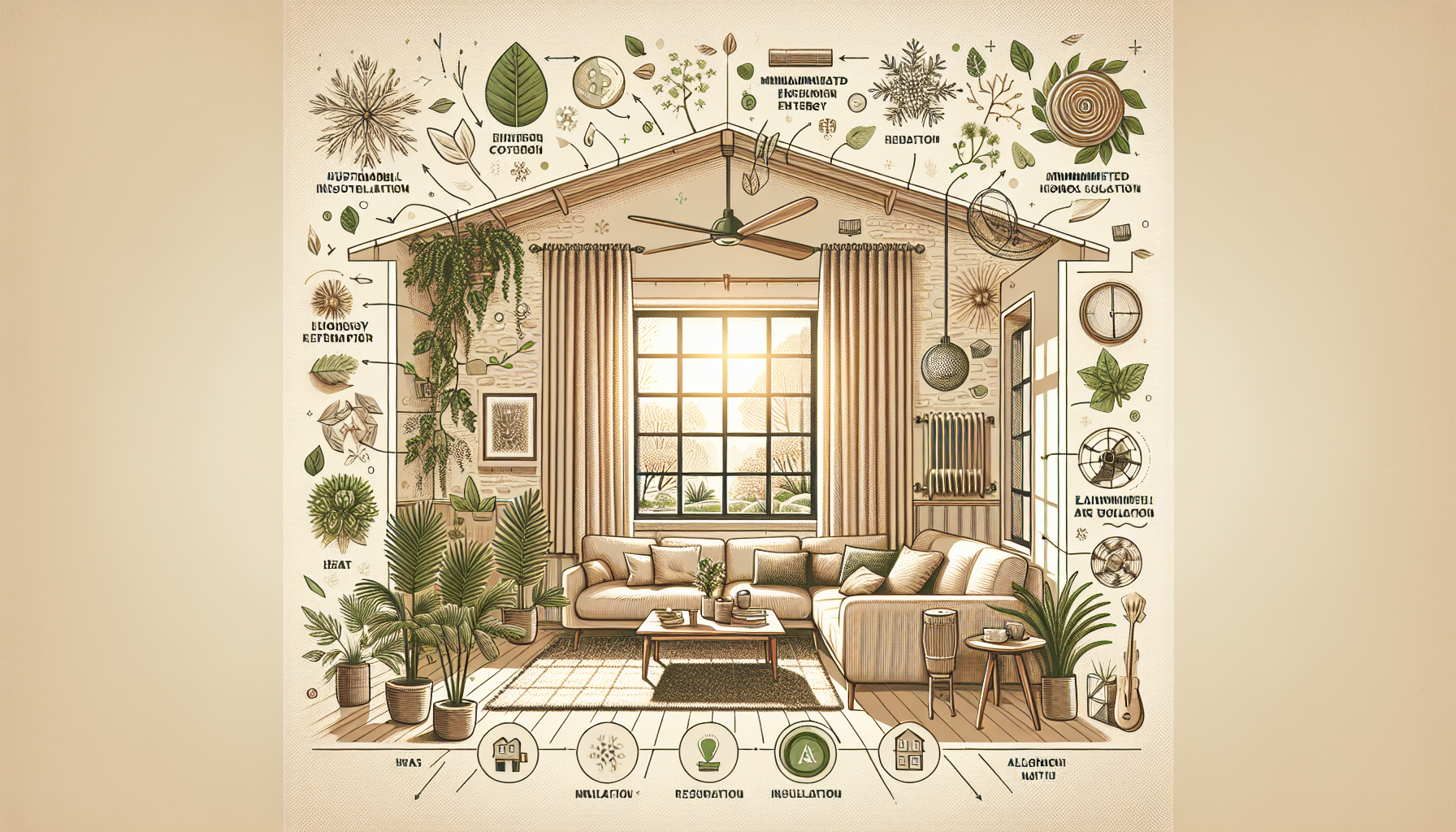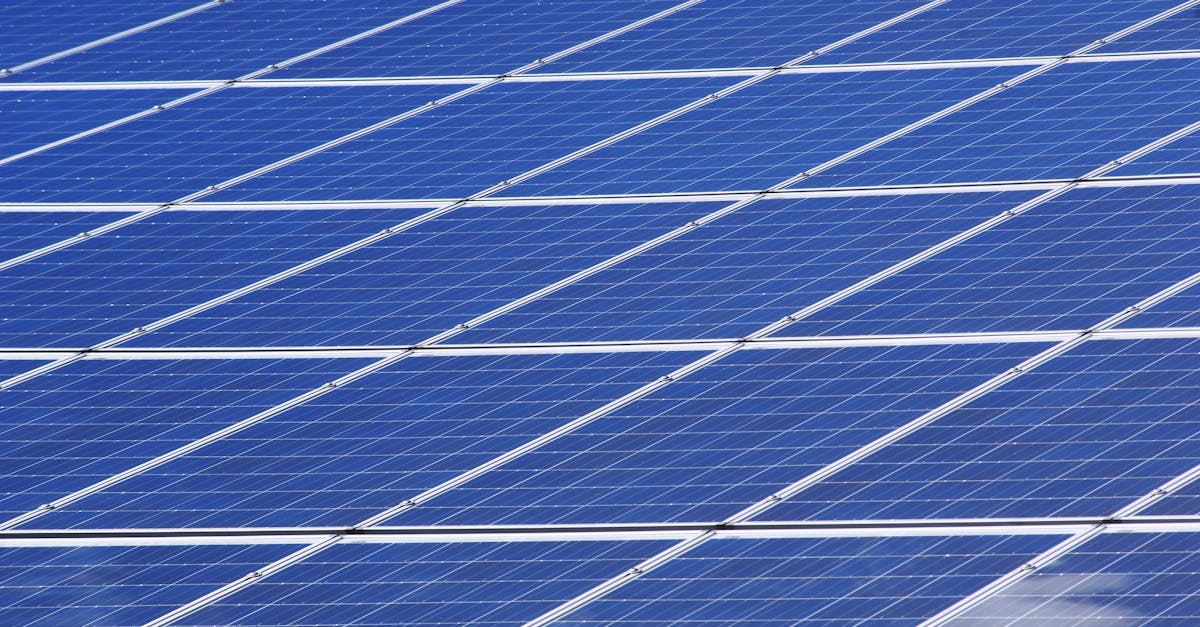Sustainable Home Insulation: Your Path to a Cozy, Energy-Efficient, and Eco-Friendly Abode

In the present era of environmental concerns and rising energy costs, sustainable home insulation has emerged as a paramount solution for creating a cozy and energy-efficient living space. Implementing sustainable insulation not only reduces your carbon footprint but also leads to significant long-term cost savings. This comprehensive guide will delve into the realm of sustainable home insulation, empowering you with the knowledge and insights to make informed decisions for your home.
Embracing sustainable insulation means choosing eco-friendly materials that minimize environmental impact while providing exceptional insulation properties. From recycled cellulose to natural sheep’s wool, various options exist to meet the specific needs of your home and climate. By understanding the benefits and types of sustainable insulation, you can create a home that is not only comfortable but also aligns with your environmental values.
Thank you for reading this post, don't forget to subscribe!
As you embark on your sustainable insulation journey, you will discover a range of installation methods tailored to your DIY capabilities and budget. Whether you opt for a hands-on approach or entrust the task to professionals, proper installation is crucial to maximize energy efficiency and ensure long-term performance. By following best practices and employing effective sealing techniques, you can minimize air leaks and drafts, further enhancing the comfort and energy savings of your home.
1. Understanding Sustainable Home Insulation
Sustainable home insulation plays a pivotal role in creating a greener environment and achieving long-term energy efficiency. By incorporating eco-friendly insulation materials into your home, you contribute to reducing greenhouse gas emissions and preserving natural resources. Sustainable insulation solutions are derived from renewable or recycled materials, minimizing the environmental impact associated with their production and disposal.
The benefits of sustainable insulation extend beyond environmental protection. By effectively insulating your home, you can significantly reduce heat loss during winter and heat gain during summer, leading to lower energy consumption. This translates into reduced reliance on heating and cooling systems, resulting in lower energy bills and a smaller carbon footprint. Additionally, sustainable insulation helps regulate indoor temperature, providing a more comfortable living environment throughout the year.
Embracing sustainable home insulation is a wise investment in the future of your home and the planet. By choosing eco-friendly insulation materials and implementing proper installation techniques, you create a cozy, energy-efficient, and environmentally conscious living space. Sustainable insulation solutions empower you to make a positive impact on the environment while enjoying the benefits of a comfortable and energy-efficient home.
Benefits of Sustainable Insulation
Sustainable insulation offers a multitude of benefits, not only reducing energy consumption but also minimizing environmental impact. By choosing eco-friendly insulation materials, you contribute to a greener planet while enjoying a more comfortable and energy-efficient home.
One of the primary benefits of sustainable insulation is its ability to reduce heat loss during winter and heat gain during summer. This leads to lower energy consumption, as your heating and cooling systems will not have to work as hard to maintain a comfortable indoor temperature. As a result, you can enjoy lower energy bills and a reduced carbon footprint.
In addition to energy savings, sustainable insulation also plays a crucial role in minimizing environmental impact. Eco-friendly insulation materials are typically made from renewable or recycled resources, reducing the use of non-renewable resources and promoting sustainability. By choosing sustainable insulation, you help conserve natural resources and reduce greenhouse gas emissions, contributing to a cleaner and healthier environment.
Types of Sustainable Insulation Materials
When it comes to sustainable insulation materials, there is a wide range of eco-friendly options to choose from, each with its unique benefits.
Cellulose insulation is made from recycled paper and is a popular choice for sustainable insulation. It is highly effective at reducing heat loss and heat gain, and it is also fire-resistant and moisture-resistant. Additionally, cellulose insulation is relatively inexpensive and easy to install.
Recycled denim insulation is another sustainable option that is made from recycled denim jeans. It is a good choice for soundproofing and insulation, and it is also moisture-resistant. Recycled denim insulation is slightly more expensive than cellulose insulation, but it is still a relatively affordable option.
Sheep’s wool insulation is a natural and sustainable insulation material that is made from the wool of sheep. It is a good choice for those who are looking for a natural and eco-friendly insulation option. Sheep’s wool insulation is highly effective at reducing heat loss and heat gain, and it is also fire-resistant and moisture-resistant. However, sheep’s wool insulation is more expensive than cellulose and recycled denim insulation.
2. Choosing the Right Insulation for Your Home
Choosing the right insulation for your home is important to ensure that you are getting the best possible energy efficiency and comfort. There are a few factors to consider when choosing insulation, including the climate in your area, the type of home you have, and your budget.
If you live in a cold climate, you will need to choose insulation with a high R-value. R-value is a measure of how well insulation resists heat flow. The higher the R-value, the better the insulation. For homes in cold climates, an R-value of at least R-30 is recommended.
If you live in a warm climate, you may not need as much insulation. However, insulation can still help to reduce your energy bills by keeping your home cooler in the summer. For homes in warm climates, an R-value of at least R-13 is recommended.
The type of home you have will also affect the type of insulation you choose. For example, homes with attics need to have insulation in the attic to prevent heat loss. Homes with crawlspaces need to have insulation in the crawlspace to prevent cold air from entering the home.
Assessing Your Home’s Insulation Needs
Assessing your home’s insulation needs is the first step to choosing the right insulation for your home. There are a few key factors to consider when assessing your home’s insulation needs, including the climate in your area, the age of your home, and the type of insulation you currently have.
The climate in your area will affect the type of insulation you need. If you live in a cold climate, you will need to choose insulation with a high R-value. R-value is a measure of how well insulation resists heat flow. The higher the R-value, the better the insulation. For homes in cold climates, an R-value of at least R-30 is recommended.
The age of your home will also affect the type of insulation you need. Older homes may not have any insulation, or they may have insulation that is no longer effective. If you are unsure about the insulation in your home, it is a good idea to have it inspected by a professional.
The type of insulation you currently have will also affect the type of insulation you need. If you have old, ineffective insulation, you will need to remove it before installing new insulation. However, if you have newer insulation that is still in good condition, you may be able to add to it.
Cost-Effective Insulation Solutions
There are a number of cost-effective insulation solutions available that can help you save energy and money. When choosing insulation, it is important to consider the cost of the insulation itself, as well as the cost of installation. Some types of insulation are more expensive to install than others, but they may also provide better energy savings over time.
One of the most cost-effective insulation options is cellulose insulation. Cellulose insulation is made from recycled paper, and it is a good choice for both attics and walls. Cellulose insulation is relatively inexpensive to install, and it can provide good energy savings. Another cost-effective insulation option is fiberglass insulation. Fiberglass insulation is made from glass fibers, and it is a good choice for both attics and walls. Fiberglass insulation is also relatively inexpensive to install, and it can provide good energy savings.
If you are looking for a more high-performance insulation option, you may want to consider spray foam insulation. Spray foam insulation is made from polyurethane, and it is applied as a liquid that expands to fill the space it is applied to. Spray foam insulation is more expensive to install than cellulose or fiberglass insulation, but it can provide excellent energy savings.
3. Installation Methods for Sustainable Insulation
There are a variety of installation methods for sustainable insulation materials. The best method for you will depend on the type of insulation you choose and the location where you are installing it.
Loose-fill insulation is installed by pouring or blowing it into place. This type of insulation is best suited for attics and crawlspaces. Batt insulation is installed by stapling or nailing it to the studs in your walls or ceiling. This type of insulation is best suited for walls and ceilings.
Spray foam insulation is installed by spraying it onto the surface you want to insulate. This type of insulation is best suited for hard-to-reach areas and areas where you need a lot of insulation.
When installing sustainable insulation, it is important to follow the manufacturer’s instructions carefully. This will help ensure that the insulation is installed correctly and that it will perform as expected.
DIY Insulation Installation
If you are a homeowner who is looking to save money and reduce your environmental impact, DIY insulation installation may be a good option for you. There are a number of DIY-friendly insulation options available, and many of them are easy to install.
One of the most popular DIY insulation options is batt insulation. Batt insulation is made from fiberglass or cellulose, and it comes in pre-cut panels that are easy to install. Batt insulation is best suited for walls and ceilings.
Another popular DIY insulation option is loose-fill insulation. Loose-fill insulation is made from cellulose or fiberglass, and it is installed by pouring or blowing it into place. Loose-fill insulation is best suited for attics and crawlspaces.
If you are not sure how to install insulation yourself, there are a number of resources available to help you. You can find step-by-step installation guides online, or you can hire a professional to help you with the installation.
Professional Installation Services
Professional insulation installation offers a number of benefits, including: – Proper installation: Professional installers have the knowledge and experience to ensure that your insulation is installed correctly. This will help to maximize its energy efficiency and performance. – Safety: Insulation can be irritating to the skin and eyes, and it can also be a fire hazard if it is not installed properly. Professional installers are trained to handle insulation safely, and they will take precautions to protect your health and safety. – Warranty: Many professional insulation installers offer warranties on their work. This gives you peace of mind knowing that your insulation will be installed properly and that you will be protected if there are any problems.
4. Maximizing Energy Efficiency and Comfort
There are a number of practical tips you can follow to maximize energy efficiency and comfort in your home through sustainable insulation:
-
Insulate your attic. The attic is one of the most important places to insulate, as it can account for up to 25% of heat loss in your home. Make sure to insulate your attic with a material that has a high R-value, such as cellulose or fiberglass.
-
Insulate your walls. Insulating your walls can also help to reduce heat loss and improve your home’s energy efficiency. If you have older walls, you may need to add insulation to them. You can do this by either installing batt insulation or spray foam insulation.
-
Seal air leaks. Air leaks can also allow heat to escape from your home. Make sure to seal any air leaks around windows, doors, and other openings. You can do this by using caulk, weatherstripping, or foam sealant.
-
Use curtains and blinds. Curtains and blinds can help to block out heat from the sun in the summer and keep heat in during the winter. Make sure to close your curtains and blinds during the hottest and coldest parts of the day.
Sealing Air Leaks and Drafts
Sealing air leaks and drafts is one of the most important things you can do to improve the energy efficiency of your home. Air leaks can allow cold air to enter your home in the winter and warm air to escape in the summer, which can make your home uncomfortable and increase your energy bills.
There are a number of ways to seal air leaks and drafts, including:
-
Caulk and weatherstripping: Caulk and weatherstripping can be used to seal gaps around windows, doors, and other openings.
-
Foam sealant: Foam sealant can be used to fill larger gaps and cracks.
-
Expanding spray foam: Expanding spray foam can be used to seal hard-to-reach areas, such as around pipes and wires.
Sealing air leaks and drafts can make your home more comfortable and energy-efficient. By keeping cold air out and warm air in, you can reduce your energy bills and create a more comfortable living environment.
Regulating Indoor Temperature
Sustainable insulation can help you maintain optimal indoor temperatures while reducing heating and cooling costs. By keeping your home warm in the winter and cool in the summer, sustainable insulation can make your home more comfortable and energy-efficient.
There are a number of ways to regulate indoor temperature using sustainable insulation, including:
-
Insulating your attic: The attic is one of the most important places to insulate, as it can account for up to 25% of heat loss in your home. Make sure to insulate your attic with a material that has a high R-value, such as cellulose or fiberglass.
-
Insulating your walls: Insulating your walls can also help to reduce heat loss and improve your home’s energy efficiency. If you have older walls, you may need to add insulation to them. You can do this by either installing batt insulation or spray foam insulation.
-
Using curtains and blinds: Curtains and blinds can help to block out heat from the sun in the summer and keep heat in during the winter. Make sure to close your curtains and blinds during the hottest and coldest parts of the day.
5. Eco-Friendly Practices and Long-Term Benefits
Choosing sustainable home insulation offers numerous eco-friendly practices and long-term benefits that contribute to a greener and more sustainable living environment.
Eco-friendly practices: – Sustainable insulation materials, such as cellulose, recycled denim, and sheep’s wool, are made from renewable or recycled resources, reducing the use of non-renewable resources and promoting sustainability. – These materials often have low embodied energy, meaning the energy used to produce, transport, and install them is minimal, further reducing environmental impact. – By choosing sustainable insulation, you can minimize waste and contribute to a circular economy, where materials are reused and recycled, reducing the burden on landfills.
Long-term benefits: – Sustainable insulation provides excellent thermal performance, effectively reducing heat loss in winter and heat gain in summer. This leads to lower energy consumption for heating and cooling, resulting in reduced carbon emissions and utility bills. – The durability of sustainable insulation materials ensures longevity, providing consistent energy savings and a comfortable living environment for many years to come. – Some sustainable insulation materials, such as sheep’s wool, have natural moisture-wicking and sound-absorbing properties, enhancing indoor air quality and reducing noise levels, contributing to overall well-being.
Reducing Carbon Footprint
Choosing sustainable insulation for your home contributes significantly to reducing your carbon footprint and promoting eco-friendly living. Here’s how:
Reduced energy consumption: Sustainable insulation materials provide excellent thermal performance, effectively reducing heat loss in winter and heat gain in summer. This leads to lower energy consumption for heating and cooling, resulting in reduced reliance on fossil fuels and a smaller carbon footprint.
Lower greenhouse gas emissions: The production and use of energy, particularly from fossil fuels, release greenhouse gases into the atmosphere. By reducing energy consumption through sustainable insulation, you minimize the associated greenhouse gas emissions, contributing to climate change mitigation.
Sustainable materials: Sustainable insulation materials, such as cellulose, recycled denim, and sheep’s wool, are made from renewable or recycled resources. These materials often have a lower carbon footprint compared to traditional insulation materials, as they require less energy to produce and transport. By choosing sustainable insulation, you support eco-friendly practices and promote a circular economy.
Long-Term Cost Savings
Sustainable insulation offers significant long-term cost savings through energy efficiency and potential financial incentives:
Reduced energy bills: By effectively reducing heat loss and heat gain, sustainable insulation leads to lower energy consumption for heating and cooling. This translates into reduced utility bills, providing ongoing financial savings throughout the lifetime of the insulation.
Government incentives and rebates: Many governments and utility companies offer incentives and rebates to homeowners who choose energy-efficient home upgrades, including sustainable insulation. These financial incentives can further offset the upfront costs of sustainable insulation, making it a more affordable investment.
Increased property value: Sustainable insulation not only improves the comfort and energy efficiency of your home but also enhances its overall value. Potential buyers recognize the benefits of sustainable features and are often willing to pay a premium for homes with these upgrades, leading to a potential increase in your property value.




